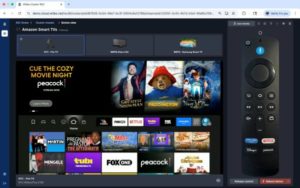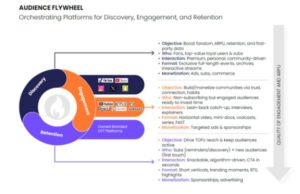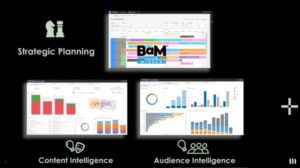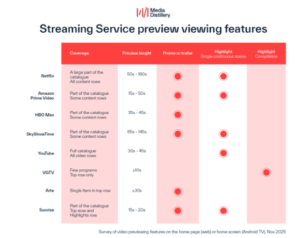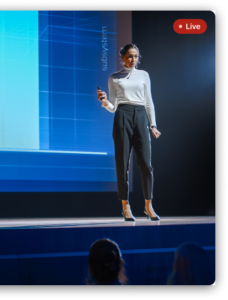Magine Pro – How end-to-end solutions drive operational efficiency and growth in the OTT industry

Matthew Wilkinson, CEO, Magine Pro
In today’s fast-paced market, efficiency and agility are crucial for OTT operators and vendors striving to keep pace with rapid innovation. To remain competitive, these companies must maintain seamless operations and stay strategically focused, ensuring they can adapt quickly to changing market dynamics. At Magine Pro, we champion an all-encompassing approach that not only simplifies the OTT ecosystem but also drives significant business value. As the CEO of Magine Pro, I’ve seen firsthand how a well-integrated, end-to-end platform can transform operations, streamline processes, and create new opportunities for growth.
Partnering with a single vendor for end-to-end OTT solutions allows media companies to streamline responsibilities and eliminate operational silos. In contrast, working with multiple vendors often requires companies to shoulder the burden of integrating and coordinating disparate systems – a process that can be time-consuming and fraught with challenges. This fragmented approach frequently leads to delays, miscommunications, and a lack of cohesive strategy. These obstacles ultimately hinder a company’s ability to innovate and respond quickly to market demands, making it difficult to maintain a competitive edge.

Vendors like Magine Pro, who own all their intellectual property (IP) in-house, can offer a more streamlined and agile solution. With control over the entire technology stack, they can accelerate the market introduction of new products and features, ensuring that innovations reach consumers faster. For example, having an in-house team of developers, combined with a proprietary CRM, enables rapid deployment of new features without the need to wait for external vendors’ roadmaps or navigate their development cycles. This end-to-end control ensures quick iterations, prompt responses to customer needs, and the ability to stay ahead of market trends.
Moreover, automation is a critical factor in achieving operational efficiency. Vendors that prioritize automation offer media companies a distinct edge by streamlining processes and reducing the need for manual interventions. By automating repetitive tasks and complex workflows, errors are minimized, and consistency in output is maintained across all operations. This shift not only ensures high-quality service delivery but also frees up valuable resources that can be redirected toward more strategic initiatives, such as content creation or customer engagement.
For instance, automating high-volume workflows such as Media Asset Management—from content ingestion and processing to final publication—can significantly cut operational overhead, reduce bottlenecks, and improve overall efficiency. As demand for services grows, automation provides the scalability needed to handle increased volumes without compromising on performance or quality. This capability is crucial for media companies looking to expand their offerings while maintaining a high level of service delivery, ensuring that they can continue to meet customer needs effectively and efficiently as their audience scales.
For media companies, especially those new to the market, adopting an operational expenditure (OPEX) model offers an efficient strategic advantage. This model enables them to focus their resources on creating compelling content and executing effective marketing campaigns, rather than on building and maintaining complex technological infrastructures. By avoiding the significant upfront costs associated with capital expenditure (CAPEX) on technology, the OPEX model provides financial flexibility. It allows companies to pivot quickly if their initial strategies don’t yield the desired results, facilitating rapid iteration on their go-to-market approaches without being constrained by sunk costs in technology infrastructure.
However, it’s essential to acknowledge that while end-to-end solutions offer broad capabilities, they may not always provide the same depth as best-of-breed solutions, especially when companies operate at scale and seek marginal gains in performance. Best-of-breed vendors can offer highly specialized optimizations across the value chain, such as a 0.5% improvement in conversion rates or a slight enhancement in recommendation algorithms. These optimizations can be crucial for large-scale operations aiming to maximize every aspect of their service.

At Magine Pro, we understand that one size does not fit all. While we offer a comprehensive end-to-end solution, we also provide the flexibility to integrate best-of-breed solutions as our customers scale. Flexibility is a crucial factor media companies should look for in a vendor, as it’s far more efficient to work with a partner who can grow with you, avoiding the operational overhead of migrating to new systems later. This hybrid approach ensures that our clients can benefit from the simplicity and efficiency of an integrated platform, while also having the option to incorporate specialized tools and services as their needs evolve.
Ultimately, choosing an end-to-end approach is not just about convenience; it’s about partnering with a company that acts in your best interest across the entire value chain, offering a unified vision and execution strategy that aligns with your business goals. At Magine Pro, we enable our clients to focus on what differentiates them in the market—their media content and customer acquisition strategies—rather than getting bogged down in technical complexities.

